St Columb Major, Cornwall
Up to 1834
A parliamentary report of 1777 recorded a parish workhouses in operation at Padstow with accommodation for up to 100 inmates, and at St Columb Major for 60.
In September 1826, an auction was held for the sale of "the extensive premises now occupied as the workhouse, situate in a very desirable spot, in the Town of St.Columb, with the Courtlage, Garden and appurtenances to the same belonging."
A block of houses near the church in Crantock may have originally been built as a parish poorhouse.
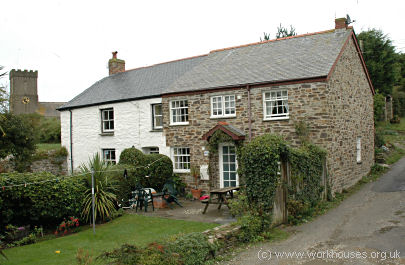
Crantock possible former poorhouse, 2005.
© Peter Higginbotham.
Some cottages on the Butts at (Saint) Newlyn East (or East Newlyn) were once the village poorhouse.
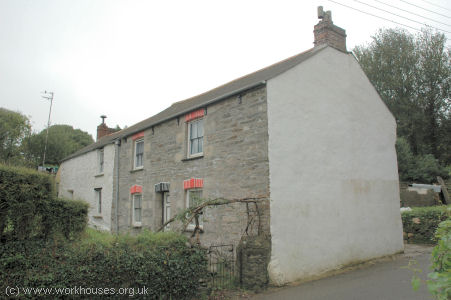
Newlyn East former poorhouse, 2005.
© Peter Higginbotham.
After 1834
St Columb Major Poor Law Union was formed on 9th May 1837. Its operation was overseen by an elected Board of Guardians, 23 in number, representing its 10 constituent parishes as listed below (figures in brackets indicate numbers of Guardians if more than one):
Cornwall:
Colan, Crantock, Cubert, St Breock (3), St Columb Major (4), St Columb Minor (3), St Enoder (2), St Ervan, St Eval, St Essey (2), Little Petherick, Mawgan (in Pyder) (2), St Merryn (2), Newlyn (2), Padstow (3), St Wenn (2).
Later addition: Newquay (from 1894).
The population falling within the Union at the 1831 census had been 14,737 — ranging from Little Petherick (population 224) to St Columb Major itself (2,790). The average annual poor-rate expenditure for the period 1834-36 had been £5,718 or 7s.9d. per head of the population.
The St Columb Major Union workhouse was built in about 1840 on a site at the north of St Columb Major. It was designed by George Gilbert Scott and his partner William Bonython Moffatt who were also the architects for other Cornish workhouses in Liskeard, Redruth, St Austell, and Penzance. Intended to accommodate 150 inmates, the Poor Law Commissioners authorised the sum of £5,150 on its construction. The workhouse location and layout are shown on the 1906 map below:
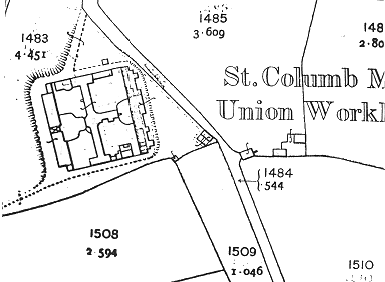
St Columb Major site, 1906.
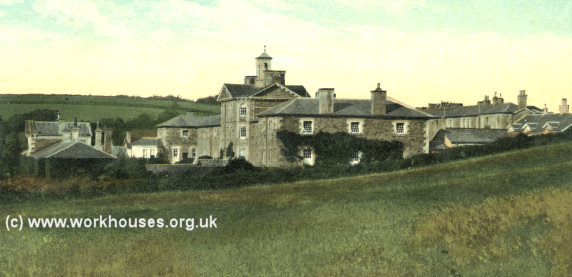
St Columb Major from the south, early 1900s.
© Peter Higginbotham.
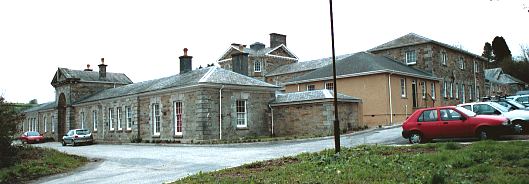
St Columb Major from the south-west, 2001.
© Peter Higginbotham.
St Columb Major followed Scott and Moffatt's typical design. It had a single-storey front block with a central entrance archway.
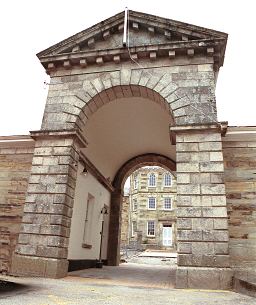
St Columb Major entrance from the west, 2001.
© Peter Higginbotham.
To the rear was the main accommodation block..
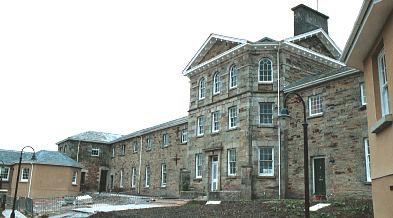
St Columb Major main block from the south-west, 2001.
© Peter Higginbotham.
An infirmary block stood to the rear — this was rebuilt in about 1903.
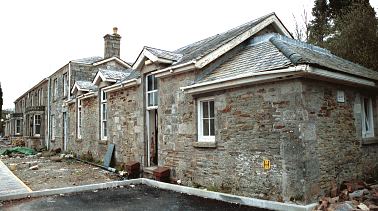
St Columb Major infirmary block from the south-west, 2001.
© Peter Higginbotham.
In 1933, the workhouse was turned into a home for "mental defectives" and various alterations were made, with S Pool as architect. Accommodating 111 inmates, it opened in its new role in January 1935 and was known as The Retreat.
In 2000-1, the former workhouse was converted for use as housing.
Scattered Homes
In the early 1900s, St Columb Major also operated a number of scattered homes for pauper children. A home for boys was located on Fore Street, and one for girls on Bank Street. In the 1920s, homes for boys and girls operated in a house on New Road.
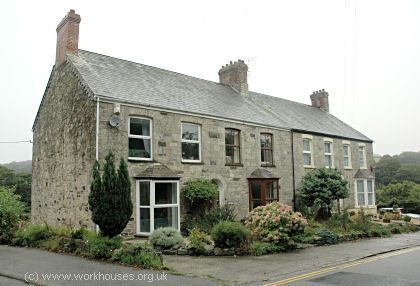
St Columb Major New Road scattered homes, 2005.
© Peter Higginbotham.
Staff
Inmates
Records
Note: many repositories impose a closure period of up to 100 years for records identifying individuals. Before travelling a long distance, always check that the records you want to consult will be available.
- Cornwall Archives, Kresen Kernow, Little Vauxhall, Redruth TR15 1AS. Holdings include Guardians' minute books (1837-1868, 1871-1930); Deaths (1914-30); Admissions and discharges (1926-33); etc.
Bibliography
- Higginbotham, Peter The Workhouse Encyclopedia (2014, The History Press)
Links
- None.
Unless otherwise indicated, this page () is copyright Peter Higginbotham. Contents may not be reproduced without permission.


